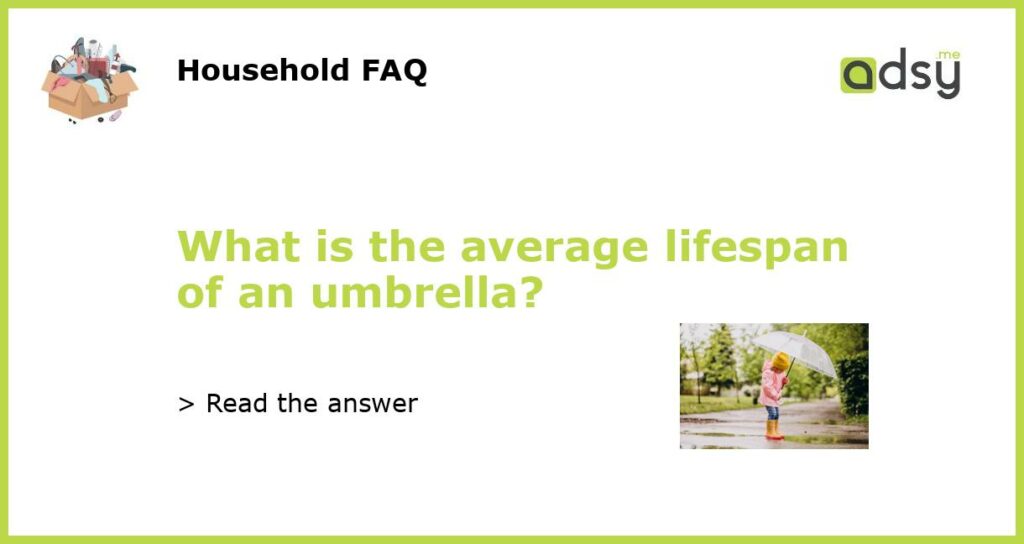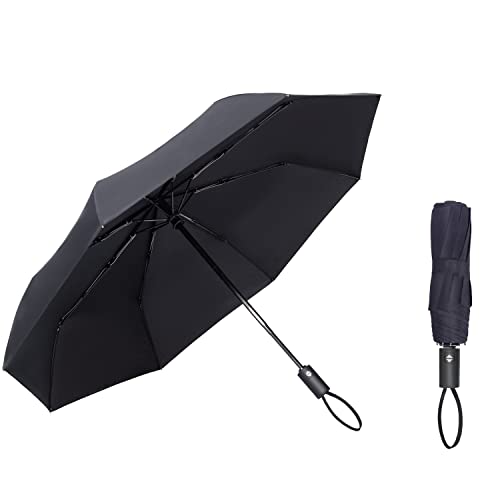Introduction
An umbrella is a common tool used by people to protect themselves from rain or sunlight. It is typically a portable canopy made of fabric or other material, supported by a collapsible metal frame. Umbrellas come in various sizes and shapes, with different features and designs. But have you ever wondered what the average lifespan of an umbrella is? In this article, we will explore this question and provide some insights into the factors that can affect the longevity of an umbrella.
Factors affecting the lifespan of an umbrella
Several factors can affect how long an umbrella lasts. Here are some of the most significant ones:
- Quality of materials: The quality of the materials used in an umbrella greatly influences its lifespan. Umbrellas made of cheap, low-quality materials are more likely to break or tear quickly.
- Build quality: The construction and build quality of an umbrella play a crucial role in determining its lifespan. If an umbrella is poorly constructed or assembled, it is more likely to fail.
- Usage frequency: How often you use your umbrella can also impact its lifespan. If you use it frequently, it may wear out faster compared to occasional use.
- Environmental conditions: The weather conditions in your area also affect how long an umbrella lasts. Exposure to wind, rain, snow, and sunlight can cause damage to the umbrella’s fabric and frame.
- Maintenance and care: Proper maintenance and care can significantly extend the lifespan of an umbrella. Regular cleaning, drying, and storage in a dry place can help prevent damage and extend its usability.
Average lifespan of an umbrella
The average lifespan of an umbrella can vary depending on the factors mentioned above. On average, a well-made and properly maintained umbrella can last anywhere from one to five years. However, some factors may cause an umbrella to wear out or break even sooner.
For example, if you frequently use your umbrella in heavy rain or strong wind, it may succumb to the strain faster than if you only use it occasionally. Additionally, umbrellas made with cheap materials or poor construction may not last as long as those made with higher-quality materials.
Keep in mind that these are general estimates, and individual experiences may vary. Some people may have had umbrellas for several years without any issues, while others may have had theirs break within a few months.
Extending the lifespan of your umbrella
While the lifespan of an umbrella is not entirely within your control, there are steps you can take to extend its usability:
- Invest in a high-quality umbrella: Opt for umbrellas made with durable materials and sturdy construction. Although they may cost more, they are likely to last longer.
- Store your umbrella properly: After use, make sure to dry your umbrella thoroughly before storing it. Avoid leaving it in a damp or humid environment, as this can lead to mold or rust.
- Avoid exposing it to harsh conditions: While some umbrellas are designed to withstand strong winds, it is best to avoid using them in extreme weather conditions that could potentially damage them.
- Inspect and repair when necessary: Regularly check your umbrella for any signs of damage or wear. If you notice any tears, broken spokes, or other issues, address them promptly to prevent further damage.
- Consider using umbrella covers or sleeves: These accessories can provide an extra layer of protection for your umbrella when not in use.
When should you replace your umbrella?
Knowing when to replace your umbrella is essential to ensure you are using a reliable tool for protection against the elements. Here are some signs that indicate it may be time for a new umbrella:
- Frequent tearing or breakage: If your umbrella consistently tears or breaks, it may be an indication of poor quality or excessive wear. Consider investing in a more durable option.
- Visible signs of damage: If your umbrella shows visible signs of damage, such as bent or broken spokes, it may no longer provide adequate protection.
- Difficulty in opening or closing: If you struggle to open or close your umbrella smoothly, it may be a sign of a worn-out mechanism that could fail soon.
- Loss of water resistance: If your umbrella starts to leak or soak through during rain, it may be losing its water-resistant properties, making it less effective in protecting you.
- Overall deterioration: If your umbrella’s fabric is faded, worn, or stained beyond repair, or if the frame is rusted or damaged extensively, it may be time to replace it.
Replacing your umbrella when necessary ensures that you have a reliable tool to shield you from the rain or sun.






